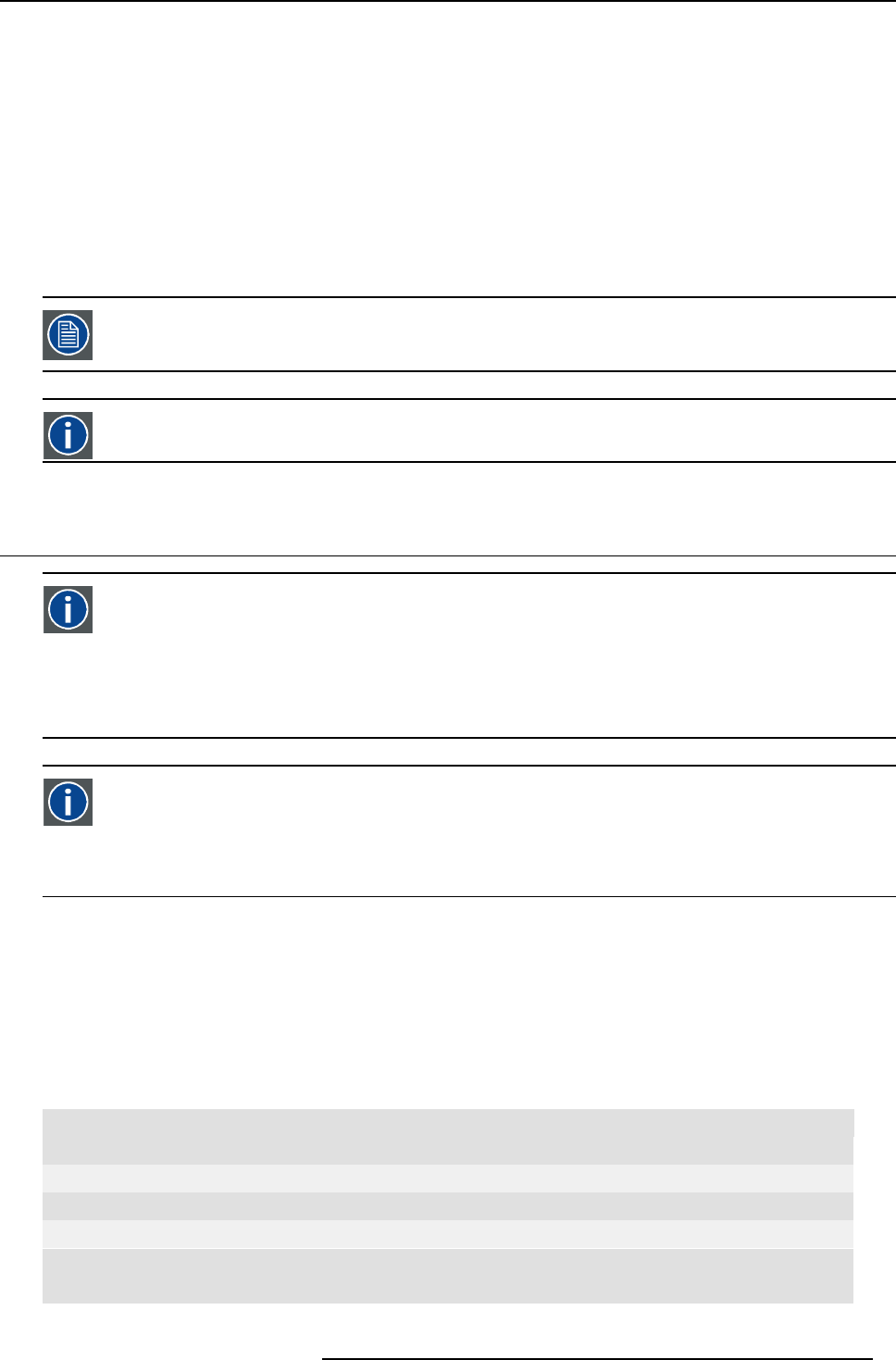
2. The Barco Projection Protocol
Typically, the following strings will be returned:
• h ostname=value; the hostname of the device
• ip-address=value; the IP address o f the device
• m ac-address=value; the MAC addr ess of the NIC o n the device
• type=value; the device type (not for DP90/DP100 projectors)
Remarks:
• The broadcast does no t follow the typical Barco Projection P rotocol formatting: the request is just one byte (not marked up
as Barco Projection Protocol command) a nd the de vices a nswer back without s ending an A CK and without formatting their
response in the Barco Projection Protocol format.
• The size of the array is undetermined, but in most cases it will contain 4 strings. However, this is open to future ex pansion, so
more strings can be added later.
• The strings normally appe ar in this order: hostname, ip-address, mac-address and type, but this canno t be guaranteed.
The use d broadcast is a limited bro adcast. This m eans that the broadcast m essage is transmitted to all NIC’s
which are on the sam e IP segment as the client. This type of broad cast is n ot forwarded by routers so it w ill
not d etec t devices wh ich are on another segment.
NIC
Network Interface Card
2.3 RS232/RS422/USB-B communication
RS232
An Electronic Industries Association (EIA) serial digital interface standard specifying the characteristics of the comm u-
nication path between two dev ices using either D-SUB 9 pins or D-SUB 25 pins connectors. This standard is used for
relatively short-range communications and does not specify balanced control lines. RS-232 is a serial controls tandard
with a setnumber of conductors, data rate, word lengthand type of connector to be used. The standard specifies com-
ponent connection standards with regard to computer interface. It is also called RS-232-C, which is the third ver sion
of the RS -232 standard, and is functionally identical to the CCITT V.24 standard. Logical ’0’ is > + 3V, Logical ’1’ is < -
3V. The range between -3V and +3V is the transition zone.
RS422
An E IA serial digital interface standard that s pecifies the electrical characteristics of balanced (differential) voltage,
digital interface circuits. This standard is usable over longer distances than RS-232. This signal governs the asyn-
chronous transmission of computer data a t speeds of up to 920,000 bits per second. It is also used as the serial port
standard for Macintosh c omputers. When the difference between the 2 lines is < - 0.2V that equals with a logical ’0’.
When the difference is > +0.2V that equals to a logical ’1’..
Settings
Baud rate:Defines the speed of the data transfer. The baud rate can be set using the local user interface on the device. Consult
the us er manual of the device for m ore detailed information.
Data bits: Eight (8) data bits a re used for each character o f the d ata transfer.
Parity: There is no parity bit used to perform error checking.
Stop bit: One (1) stop bit is used to define the end of a character.
Hardware
RS232/422 input (Sub-D) port
Pin Description
1
DCD : Data Carrier Detect
2RXD-:ReceiveData
3 TXD- : Transmitted Data
4
DTR : Data Terminal Rea dy [RS232]
TXD+ : Transmitted Da ta [RS422]
R5905746 COMMAND CATALOG 06/01/2014
9


















